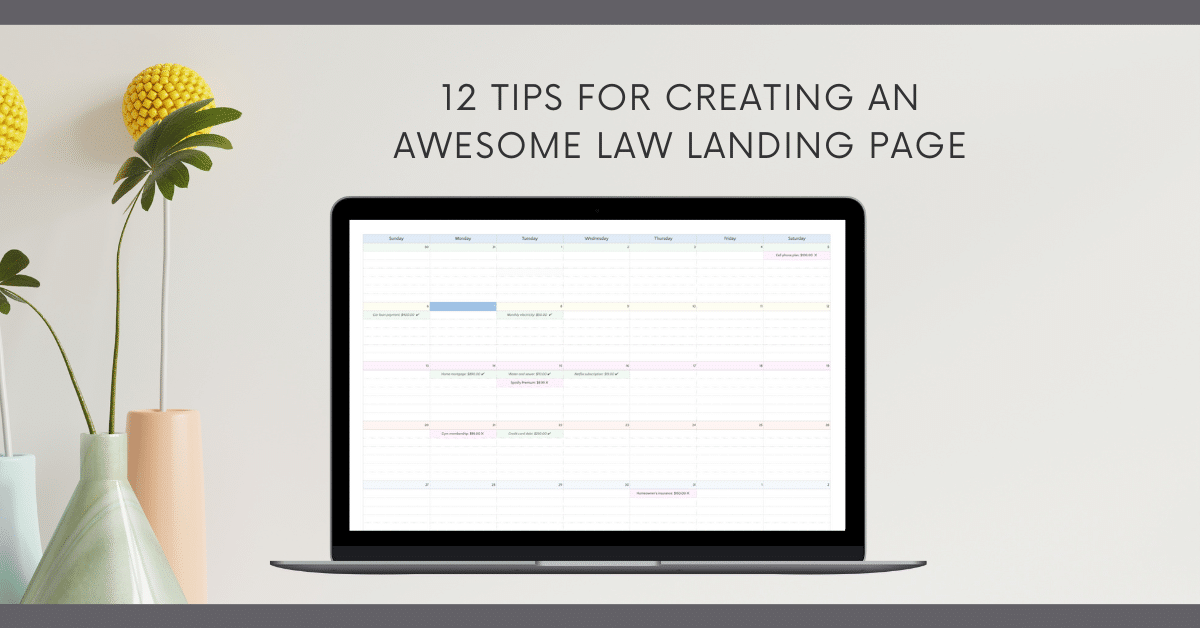A landing page is the digital front door to your law firm’s services. Given the competitive landscape of the legal industry, it’s crucial that your landing page not only stands out but effectively converts visitors into potential clients. Here’s a guide to crafting a compelling landing page for law websites in Santa Monica.
1. Headline & Subheadline
Start with a powerful headline that captures the essence of your law firm. It should be clear and concise. The subheadline can elaborate more, offering insight into your firm’s specialties or approach. For instance, “Smith & Associates: Protecting Your Rights” with a subheadline of “Expert legal advice tailored to your needs.”
2. Engaging Imagery
A high-quality image or video background can make your landing page visually appealing. Consider using images of your team in action, your office, or other related visuals that convey professionalism and trust.
3. Clear Call-to-Action (CTA)
Your CTA is the most vital part of your landing page. It prompts visitors to take the next step, whether scheduling a consultation, downloading a resource, or simply making a phone call. Ensure your CTA is clear, concise, and prominently displayed.
4. Trust Signals
Legal services are built on trust. Display badges of any professional associations you’re part of, awards you’ve won, and, most importantly, client testimonials. Actual words from satisfied clients can do wonders for your credibility.
5. Relevant Content
Detail the services you offer, but be concise. Bullet points or cleanly designed service boxes can quickly inform visitors about your areas of expertise without overwhelming them with text. Clearly indicate that if you specialize in personal injury, family law, or corporate legalities.
6. Responsive Design
More users are accessing law sites via mobile devices than ever before. Ensure your landing page is mobile-friendly, meaning it looks and works well on various screen sizes. A page that’s hard to navigate can deter potential clients.
7. Contact Information
This may seem basic, but how many firms bury their contact information is astounding. Display your phone number prominently, ideally at the top of the page, and include a contact form. Some visitors prefer filling out a form rather than making a direct call.
8. FAQs
Consider including a section for frequently asked questions, especially if you find there are common queries about your services. This not only aids in converting visitors but can also reduce the number of preliminary questions during initial consultations.
9. SEO Optimization
Your law landing page should be optimized for search engines. Incorporate relevant keywords naturally into your law content to help improve its ranking on search results. This can significantly increase the visibility of your law firm to potential clients.
10. Fast Loading Time
Speed is essential for user experience. Ensure your law landing page loads quickly by optimizing images, leveraging browser caching, and using a content delivery network, if necessary.
11. A/B Testing
Never settle for your first design. Test different landing page elements (like CTAs, images, or headlines) to see which versions perform better in conversions. Tools like Google Optimize can help with this.
12. Analytics Integration
Utilize awesome tools such as Google Analytics to track visitors’ behaviors. This will give you insights into what’s working and what needs improvement.
Conclusion
In conclusion, an effective landing page for law firms goes beyond aesthetics. It’s a strategic blend of design, content, and user experience, all working together to build trust and compel action. You can create a landing page that impresses and converts by focusing on the elements outlined above.




